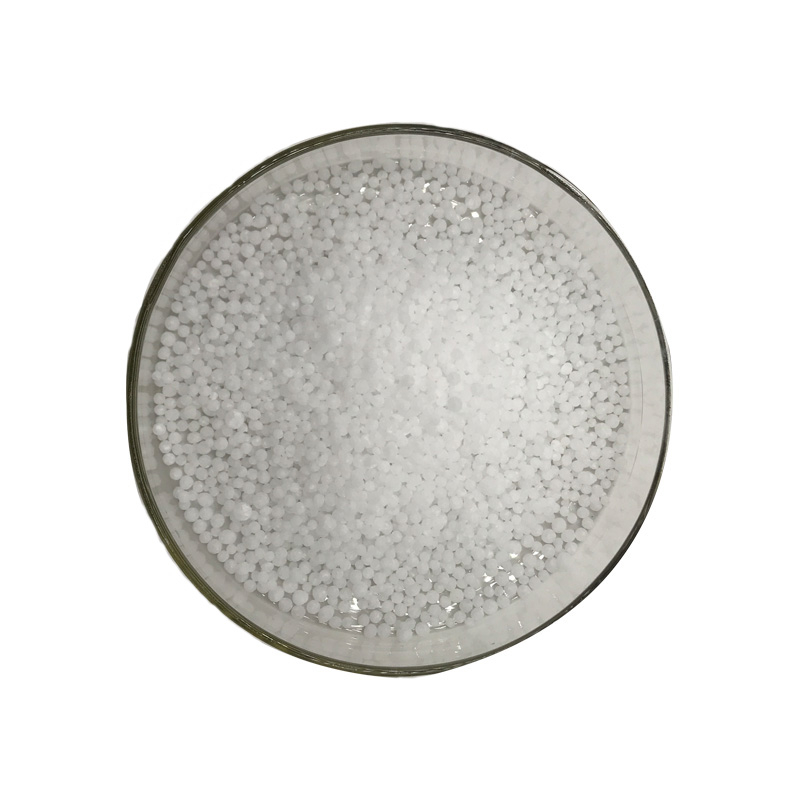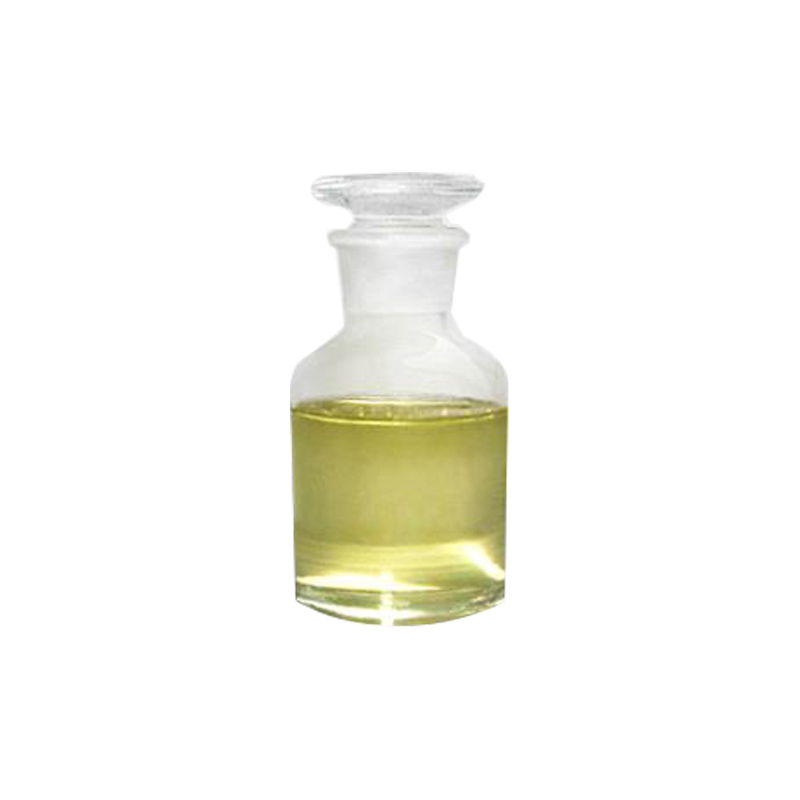Products Description of 6,7-Dimethoxyquinazoline-2,4-dione CAS#28888-44-06,7-Dimethoxy-2,4-quinazolinedione (doxazosin EP impurity D) is a chemical crystalline compound with a melting point of >300°C, an intermediate of prazosin hydrochloride.6,7-Dimethoxyquinazoline-2,4-dione Chemical PropertiesMelting point >300 °C (lit.)Boiling point 363.37°C (rough estimate)density 1.3404 (rough estimate)refractive index 1.6300 (estimate)storage temp. 2-8°Csolubility Aqueous Acid (Sparingly)pka10.27±0.20(Predicted)color White to Off-WhiteWater Solubility i
Contact Now
Products Description of Tolylene-2,4-diisocyanate CAS#584-84-9Toluene-2,4-diisocyanate is a colorless, transparent liquid at room temperature and pressure, and is sensitive to moisture.
Contact Now
Products Description of 6,7-Dimethoxy-1,2,3,4-tetrahydroisoquinoline hydrochloride CAS#2328-12-36,7-Dimethoxy-1,2,3,4-tetrahydroisoquinoline hydrochloride is a chemical with CAS number 2328-12-36,7-Dimethoxy-1,2,3,4-tetrahydroisoquinoline hydrochloride Chemical PropertiesMelting point 260-265 °C(lit.)storage temp. Keep in dark place,Sealed in dry,Room Temperaturesolubility soluble25mg/mL, clear, colorless (1N NaOH in methanol)form Shiny Flakes or Crystalline Powdercolor White to slightly beigeBRN 3634126InChIKeySHOWAGCIRTUYNA-UHFFFAOYSA-NCAS DataBase Ref
Contact Now
Products Description of 6,7-Dimethoxy-3,4-dihydroisoquinoline hydrochloride CAS#20232-39-76,7-Dimethoxy-3,4-dihydroisoquinoline hydrochloride is an intermediate for the synthesis of tetrabenazine.
Contact Now
Products Description of 2,5-Dimethyl-2,4-Hexadiene CAS#764-13-62,5-Dimethyl-2,4-hexadiene is a chemical,Insoluble in water, soluble in alcohol and ether.2,5-Dimethyl-2,4-hexadiene Chemical PropertiesMelting point 12 °CBoiling point 132134°Cdensity 0.773 g/mL at 25 °C(lit.)vapor density 3.8 (vs air)vapor pressure 26.9 mm Hg ( 37.7 °C)refractive index n20/D 1.476(lit.)Fp 85 °Fstorage temp. Flammables areasolubility Chloroform, Ethyl Acetateform Oilcolor Clear ColourlessBRN 1733342LogP3.500CAS DataBase Refer
Contact Now
Products Description of 2,4-Dichlorophenoxyacetic acid CAS#94-75-7White crystals. Melting point 138℃, boiling point 160℃ (53Pa). Soluble in organic solvents such as ethanol, acetone, ether and benzene, insoluble in water.
Contact Now
Products Description of 2,4-Dichloropyridine CAS#26452-80-22,4-Dichloropyridine is mainly used in pharmaceutical and biochemical industries.2,4-Dichloropyridine Chemical PropertiesMelting point -1 °CBoiling point 189-190 °C (lit.) 76-78 °C/23 mmHg (lit.)density 1.37refractive index 1.55-1.554Fp 189-190°Cstorage temp. Inert atmosphere,2-8°Csolubility Chloroformform Yellow to Pale Orange Liquidpka0.12±0.10(Predicted)color Colorless to Red to GreenBRN 108666InChIKeyTYPVHTOETJVYIV-UHFFFAOYSA-NCAS DataBase Reference26452-80-2(CAS DataBase Refer
Contact Now
Products Description of 2,4-Bis(phenylsulfonyl)phenol CAS#177325-75-6White powder2,4-Bis(phenylsulfonyl)phenol Chemical PropertiesMelting point 158 °CBoiling point 631.4±50.0 °C(Predicted)density 1.415±0.06 g/cm3(Predicted)pka4.17±0.43(Predicted)form powder to crystalcolor White to Almost whiteCAS DataBase Reference177325-75-6Factory and Equipment ShowFast delivery timeInventory 2-3 working days New production 7-10 working days
Contact Now
Products Description of 2,4-Difluoro-alpha-(1H-1,2,4-triazolyl)acetophenone CAS#86404-63-9Pharmaceutical Chemical Intermediates2,4-Difluoro-alpha-(1H-1,2,4-triazolyl)acetophenone Chemical PropertiesMelting point 103-107 °C(lit.)Boiling point 388.0±52.0 °C(Predicted)density 1.39±0.1 g/cm3(Predicted)storage temp. 2-8°Csolubility Chloroform (Slightly), Methanol (Slightly)form Solidpka2.05±0.10(Predicted)color White to pale brownCAS DataBase Reference86404-63-9(CAS DataBase Reference)Safety InformationSafety Statements 24/25WGK Germany 3HS Cod
Contact Now
Products Description of 2,4-di-tert-butylphenol CAS#96-76-42,4-Di-tert-butylphenol widely exists in plants and is also an important intermediate for fine chemical products. It is mainly used to prepare co-antioxidant 168, and is also used to prepare polyisobutylene, polyamide, polycarbonate, etc.; it is still It can be used to produce antioxidant Chemicalbook (300, 314), ultraviolet absorber, light stabilizer 120, dyes and textile auxiliaries, and 2402 resin.
Contact Now
Products Description of Dimethyl thio-toluene diamine CAS#106264-79-3DMTDA is a new type of polyurethane elastomer curing crosslinking agent, which mainly contains two isomers, namely a mixture of 2,4- and 2,6-dimethylthiotoluenediamine (the ratio is about 77~80/17~20).
Contact Now
Calcium beta-hydroxy-beta-methylbutyrate Chemical PropertiesMelting point >215°C (dec.)storage temp. Inert atmosphere,Room Temperaturesolubility Water (Slightly)form Powdercolor WhiteWater Solubility Soluble in water.Stability:HygroscopicInChIInChI=1S/C5H10O3.Ca.2H/c1-5(2,8)3-4(6)7;;;/h8H,3H2,1-2H3,(H,6,7);;;InChIKeyWLJUMPWVUPNXMF-UHFFFAOYSA-LSMILESC(C(=O)O)C(O)(C)C.[Ca]CAS DataBase Reference135236-72-5(CAS DataBase Reference)Safety InformationHS Code 2920907090Product Application of Calcium beta-hydroxy-beta-methylbutyrate CAS#135236-72-5Used as phar
Contact Now
Products Description of Propiconazole CAS#60207-90-1he triazole compound propiconazole (Pcz), 1-[[2-(2,4- dichlorophenyl)-4-propyl-1, 3-dioxolan-2-yl]methyl]-1,2,4-triazole, is a kind of triazole fungicide (Fig. 1). It is used extensively in a variety of applications. It is used on grasses grown for seed, mushrooms, corn, wild rice, peanuts, almonds, sorghum, oats, pecans, apricots, peaches, nectarines, plums and prunes.
Contact Now
Products Description of Diethylene glycol CAS#111-46-6Diethylene glycol (DEG) is a multifaceted compound with a pivotal role in pharmaceuticals, cosmetics, and textiles. Our firm boasts a robust track record of international collaboration, supplying DEG for applications from liquid medications to skincare formulations and advanced textile dyeing processes. Our R&D arm, in synergy with academic excellence, propels innovation, ensuring our DEG consistently exceeds purity benchmarks, typically at ≥99.9%.
Contact Now
Products Description of Chromic chloride hexahydrate CAS#10060-12-5Purple monoclinic crystal. Relative density 1.76. Melting point 83℃. Soluble in water, ethanol, slightly soluble in acetone, insoluble in ether. Deliquescent. Toxic!Chromic chloride hexahydrate Chemical PropertiesMelting point 83 °Cdensity 1.76 g/mL at 25 °C(lit.)storage temp. Inert atmosphere,Room Temperaturesolubility Methanol (Slightly), Water (Slightly)form Powder/SolidSpecific Gravity1.76color Reddish-violetPH2.0-3.0Water Solubility Soluble in water and alcohol.
Contact Now
Products Description of Iridium(III) chloride hydrateCAS#14996-61-3Green crystals or brown powder, easily absorbs moisture, dissolves in water and hydrochloric acid, loses crystal water when exposed to strong heat.Iridium(III) chloride hydrate Chemical PropertiesMelting point 763°C (dec.)density 5.3 g/mL at 25 °C(lit.)storage temp. Inert atmosphere,Room Temperaturesolubility 623.82g/l solubleform Crystalscolor BlackPH<2 (H2O, 20℃)Aqueous solutionWater Solubility Soluble in water and alcohol.Merck 14,5088Stability:hygroscopicInChIIn
Contact Now
Products Description of Benzyltributylammonium chloride CAS#23616-79-7Benzyltributylammonium chloride is a chemical substance with the molecular formula C19H34ClNBenzyltributylammonium chloride Chemical PropertiesMelting point 155-163 °C (lit.)Boiling point 466.93°C (rough estimate)density 0.9523 (rough estimate)refractive index 1.6000 (estimate)storage temp. Sealed in dry,Room Temperatureform Crystalline Powdercolor White to ivoryWater Solubility solubleSensitive HygroscopicBRN 3776210Stability:Stable. Combustible.
Contact Now
Products Description of Diisopropyl Ether (99%min) CAS#108-20-3Diisopropyl ether is a good solvent for animal, vegetable and mineral oils and fats, and can be used to extract nicotine from tobacco. It is also a good solvent for paraffin and resin. In industry, diisopropyl ether is often mixed with other solvents and applied to paraffin-based oils. The dewaxing process of the product. As a solvent, it is also used in pharmaceuticals, smokeless gunpowder chemical books, coatings and paint cleaning, etc.
Contact Now
Tert-Butyl Methyl Ether CAS# 1634-04-4Methyl tert-butyl ether (MTBE) is a colorless liquid with a distinctive, unpleasant odor. It is made from mixing chemical substances such as isobutylene and methanol, and has been used considering the fact that the Nineteen Eighties as an additive for unleaded gasolines to obtain extra environment friendly burning.MTBE is additionally used to dissolve gallstones.
Contact Now
Products Description of Ethylene glycol monoethyl ether acetate CAS#111-15-9Colorless liquid. Freezing point -61.7℃, boiling point 156.3℃, 51℃ (2.8kPa), relative density 0.973 (20℃), melting point -61.7℃, refractive index 1.4055 (20℃), flash point 51℃ (closed cup), 66℃ (open cup), ignition point 379℃. Miscible with general organic solvents and soluble in water.
Contact Now
Trihydroxymethylpropyl Trioleate CAS 11138-60-6Insoluble in water, soluble in a variety of organic solvents, such as ethanol, ether, acetone, etc. It has good chemical stability, but may decompose or react under high temperature, strong acid, strong alkali and other conditions.It has excellent lubrication properties and can effectively reduce friction and wear of mechanical equipment.
Contact Now
POLY(ETHYLENE GLYCOL) METHYL ETHER ACRYLATE Chemical PropertiesMelting point 6-7 °C(lit.)density 1.09 g/mL at 25 °C(lit.)Fp >230 °Fstorage temp. -20°Cform Granular Solidcolor White to off-whiteWater Solubility Soluble in waterEPA Substance Registry SystemPoly(oxy-1,2-ethanediyl), .alpha.-(1-oxo-2-propenyl)-.omega.-methoxy- (32171-39-4)Safety InformationHazard Codes TRisk Statements 45-46Safety Statements 53-36/37/39-24/25-22-45WGK Germany 3TSCA YesHS Code 39072090Factory and Equipment ShowFast delivery
Contact Now
Products Description of Propargylamine CAS#2450-71-7Propargylamine is a colorless or light yellow liquid at room temperature and pressure. The solubility of propargylamine in water is relatively low, but its solubility in common organic solvents such as ethanol, acetone, dimethylformamide and ether is high.
Contact Now
2-Octen-1-ylsuccinic anhydride, mixture of cis and trans Chemical PropertiesMelting point 8-12°C (lit.)density 1 g/mL at 25 °C(lit.)vapor pressure 43.5Pa at 20℃refractive index n20/D1.4694(lit.)Fp 113℃form Viscouscolor Colorless to Almost colorlessBoiling point 168°C/10 mmHg(lit.)LogP4.68 at 22℃ and pH7EPA Substance Registry System2,5-Furandione, dihydro-3-(2-octenyl)- (42482-06-4)Safety InformationHazard Codes XiRisk Statements 36/38Safety Statements 26-36WGK Germany 3HS Code 29171900Factory and Equipment ShowFast delivery timeI
Contact Now


































